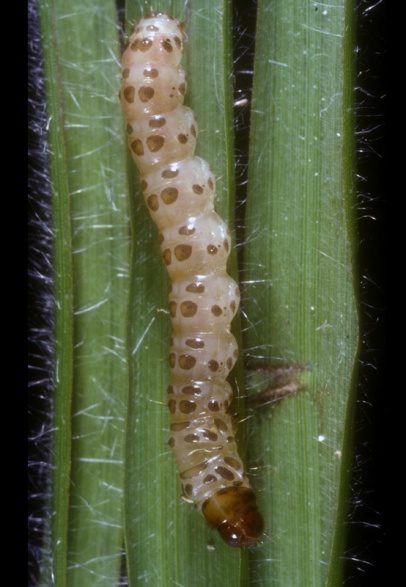
Sugarcane borer
Diatraea saccharalis (Fabricius)
(Insecta: Lepidoptera: Pyralidae)
Adult moths are straw colored with numerous fine, brown lines on the forewings. Wingspan measures 18 to 28 mm in males and 27 to 39 mm in females. Eggs are elliptical to oval and about 1.2 mm long. Eggs are white when laid, then they turn orange. Larvae are white with a brown head and grow to be 30 mm long. Summer morphs (color forms) bear brown spots on each body segment. The elongate, brown pupae are formed within the plant tissue.
The life cycle can be completed in about six weeks, and three overlapping generations may occur per year. Adult females deposit eggs in clusters along the midrib of leaves. Hatching larvae tunnel through leaf tissue or the midrib and bore into the stalk during the second or third instar. Mature larvae overwinter within crop stems and pupate in the spring.
Sugarcane borer was introduced into the United States in Louisiana in 1855, and has since established populations in the warmer regions of all Gulf Coast states. It also occurs in the Caribbean, Central America, and northern South America.
A major pest of sugarcane, this insect also feeds on other grasses within the family Gramineae.
Images
To
save the Web-optimized images shown below to your hard drive:
PC users: right click to "Save Picture (or Image) As..."
Mac users: click and drag to your desktop.

Larva of sugarcane borer, Diatraea saccharalis (Fabricius)
(Photographer: John Capinera, University of Florida)